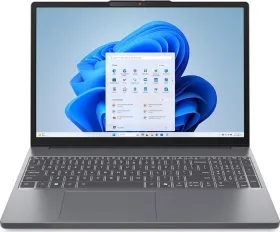Last year, Qualcomm unveiled an ‘8s’ chipset, a toned-down version of the then-flagship Snapdragon 8 Gen 3 SoC, called Snapdragon 8s Gen 3. Most recently, the company has unveiled the Snapdragon 8s Gen 4 with several advancements. The premium mid-range chipset will soon debut on the iQOO Z10 Turbo, after which it should show up on more handsets.
Today, we’ll find out how the Snapdragon 8s Gen 4 compares with its predecessor, the Snapdragon 8s Gen 3. So, without any further ado, let’s dive right into it.
Snapdragon 8s Gen 4 vs. 8s Gen 3: Tech Specs
| Snapdragon 8s Gen 4 | Snapdragon 8s Gen 3 | |
| Fabrication Process | TSMC 4nm | TSMC 4nm |
| CPU | Octa-core Kryo CPU 1x 3.2 GHz (Cortex-X4) 3x 3.0 GHz (Cortex-A720) 2x 2.8 GHz (Cortex-A720) 2x 2.0GHz (Cortex-A720) | Octa-core Kryo CPU 1x 3.0 GHz (Cortex-X4) 4x 2.8 GHz (Cortex-A720) 3x 2.0 GHz (Cortex-A520) |
| GPU | Adreno 825 GPU On-device Ray Tracing, Snapdragon Game Resolution 2.0 | Adreno 735 Hardware-accelerated Ray Tracing |
| NPU | Hexagon NPU (44% better performance) | Hexagon NPU Run AI models up to 10B parameters |
| ISP / Camera | Triple 18-bit ISPs with support for up to 320Mp camera sensors, 4K @ 60 fps HDR video capture | Triple 18-bit ISPs Up to 200 MP photo capture, 4K @ 60 fps HDR video capture |
| Connectivity | Wi-Fi 7, Bluetooth v6.0 | Wi-Fi 7, Bluetooth 5.4, LE |
| Modem | Snapdragon X75 5G modem Up to 5 4.2 Gbps peak download speed, support for only Sub-6GHz 5G network | Snapdragon X70 5G Modem Up to 5 Gbps Peak Download Speed |
| Memory & Storage | up to 24GB LPDDR5X RAM and UFS 4.0 storage | 24 GB LPDDR5X memory up to 4200 MHz UFS 4.0 |
Also Read: Snapdragon 8s Gen 3 vs Snapdragon 8 Gen 3: Specs Comparison Highlighting Differences
Snapdragon 8s Gen 4 vs. 8s Gen 3: Display
The Snapdragon 8s Gen 3 supported 4K 60Hz or QHD+ 144Hz displays. On the other hand, the Snapdragon 8s Gen 4 can now handle a WQHD+ screen at up to 144Hz refresh rate. Weirdly enough, the maximum external display support seems to have come down from 8K UHD at 30Hz to 4K at 60Hz on the new chip.
Both the chipsets support variable refresh rates between 1Hz and 240Hz, 10-bit color depth, Rec. 2020 color gamut, HDR10, HDR10+, and Dolby Vision.
Snapdragon 8s Gen 4 vs. 8s Gen 3: CPU

Even though both the chipsets have an octa-core Kryo CPU, they have a different architecture.
The Snapdragon 8s Gen 3 features a Cortex-X4 prime core clocked at 3.0 GHz, four Cortex-A720 performance cores at 2.8 GHz, and three Cortex-A520 efficient cores at 2.0 GHz. Moreover, the CPU follows a 1+4+3 CPU architecture.
The newly-launched Snapdragon 8s Gen 4, on the other hand, features one Cortex-X4 prime core clocked at 3.2 GHz (higher than the Snapdragon 8s Gen 3’s prime core), three Cortex-A720 performance cores at 3.0 GHz, two Cortex-A720 balanced cores at 2.8 GHz, and two Cortex-A720 efficient cores at 2.0 GHz.
With a slightly different configuration (1+3+2+2), the Snapdragon 8s Gen 4 offers 31% better CPU performance than its predecessor while consuming 39% less power. The new chipset sits below the almighty Snapdragon 8 Elite (3nm) SoC, making it one of the manufacturer’s most powerful processors.
Also Read: Snapdragon 8s Gen 3 vs 8 Gen 2: Which One is Better?
Snapdragon 8s Gen 4 vs. 8s Gen 3: GPU
There’s not much information about the Snapdragon 8s Gen 4’s GPU, except that it is called Adreno 825 and provides 49% better GPU performance than the GPU on the Snapdragon 8s Gen 3.
Like the GPU on its predecessor, the Adreno 825 supports hardware-accelerated Ray Tracing (with Global Illumination for improved lighting, shadows, and reflections). The GPU also facilitates features like Qualcomm Adaptive Performance Engine and Snapdragon Game Super Resolution 2.0 (for upscaling low-resolution content).
If the nomenclature is anything to go by, the Adreno 825 on the Snapdragon 8s Gen 4 should be the second most powerful GPU after the Adreno 830 on the Snapdragon 8 Elite. In fact, the new chipset is the only one after the 8 Elite to feature an Adreno 800 series GPU.
Snapdragon 8s Gen 4 vs. 8s Gen 3: ISP

The Snapdragon 8s Gen 3 features a Cognitive ISP (Triple 18-bit ISPs) with features like semantic segmentation, up to 200MP photo capture, and various Zero Shutter Lag (ZSL) configurations. Additionally, the chipset can record 4K HDR videos at 60 fps and 1080p Slow Motion video at 240 fps.
Additional features of the Snapdragon 8s Gen 3 include Boken Engine 2, Pro Sight Video Capture, Video Super Resolution, Locally Motion Compensated Temporal Filtering, and Multi-Frame Noise Reduction (MFNR). The chipset also offers Low Light Vision (LLV), which improves its low-light camera performance.
The Snapdragon 8s Gen 4 also gets a Cognitive ISP (Triple 18-bit ISPs) with semantic segmentation for photos and videos. However, the ISP on the chipset is capable of capturing images in up to 320MP resolution. Maximum video resolution, on the other hand, remains capped at 4K (60 fps).
Also Read: Snapdragon 6 Gen 4 vs. Dimensity 6400: The Better Budget King?
While the Snapdragon 8s Gen 4 includes all the features on the Snapdragon 8s Gen 3’s ISP, it adds more to the mix. For instance, the chipset can record 1080p Slow Motion videos at up to 480 fps. Further, it also supports ultra-low light video capture with AI Noise Reduction in 4K 30 fps.
The ISP also gets Night Vision 2.0 for capturing improved low-light videos in 4K 30 fps.
Snapdragon 8s Gen 4 vs. 8s Gen 3: NPU
The Snapdragon 8s Gen 3 already had a pretty capable NPU that could run AI models with up to 10B parameters, enabling features like GenAI assistant and Gen AI image generation. On the Snapdragon 8s Gen 4, buyers will get an even faster NPU that delivers 44% better performance.
As mentioned in the official infographic, the NPU supports on-device multimodal and multilingual generative AI. The faster Qualcomm AI Engine enhances the Gen AI experience while adding support for various leading LLMs and LVMs. It also offers 2x larger shared memory for improved memory bandwidth.
Snapdragon 8s Gen 4 vs. 8s Gen 3: Memory & Connectivity

While both the chipsets support up to 24GB of LPDDR5X RAM, the maximum frequency differs a bit (up to 4800 MHz on the Snapdragon 8s Gen 4 vs. 4200 MHz on the Snapdragon 8s Gen 3). Regarding storage, both processors feature UFS 4.0 storage. They also share a USB 3.1 Gen 2 port for transferring data and charging.
The Snapdragon 8s Gen 4 features the X75 5G modem, providing a peak cellular download speed of up to 4.2 Gbps, which is less than the download speed of the X70 5G modem on the Snapdragon 8s Gen 3 (up to 6.5 Gbps). Qualcomm also drops support for mmWave on the latest premium mid-range chip, implying that it only supports Sub-6 GHz networks.
Also Read: Qualcomm Brings Gen AI to Mid-Range Phones with the new Snapdragon 6 Gen 4 SoC
With Qualcomm’s FastConnect Mobile Connectivity System, the Snapdragon 8s Gen 4 supports Wi-Fi 7, with peak download speeds of up to 5.8 Gbps (similar to its predecessor). While the Snapdragon 8s Gen 3 supported Bluetooth v5.4, the new chipset supports the latest Bluetooth technology, v6.0.
Snapdragon 8s Gen 4 vs. 8s Gen 3: Conclusion
Moreover, the Snapdragon 8s Gen 4 is a more powerful iteration of the 8s Gen 3. It offers improvements across the board, including the CPU, GPU, and NPU, making it a more suitable candidate for affordable flagships or premium mid-range devices. The chipset should enable manufacturers to provide flagship-tier performance at an affordable price.
You can follow Smartprix on Twitter, Facebook, Instagram, and Google News. Visit smartprix.com for the latest tech and auto news, reviews, and guides.


































